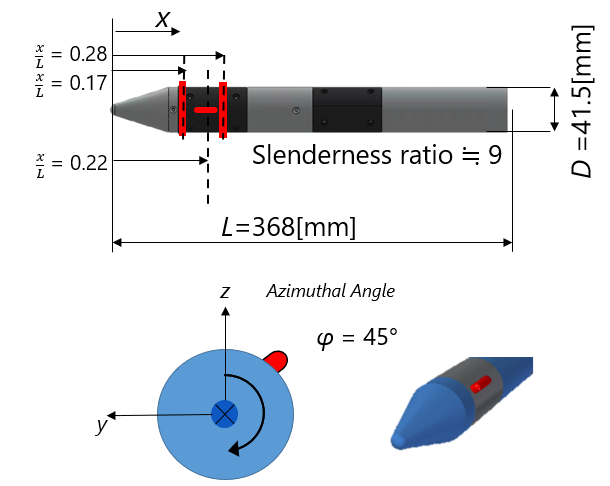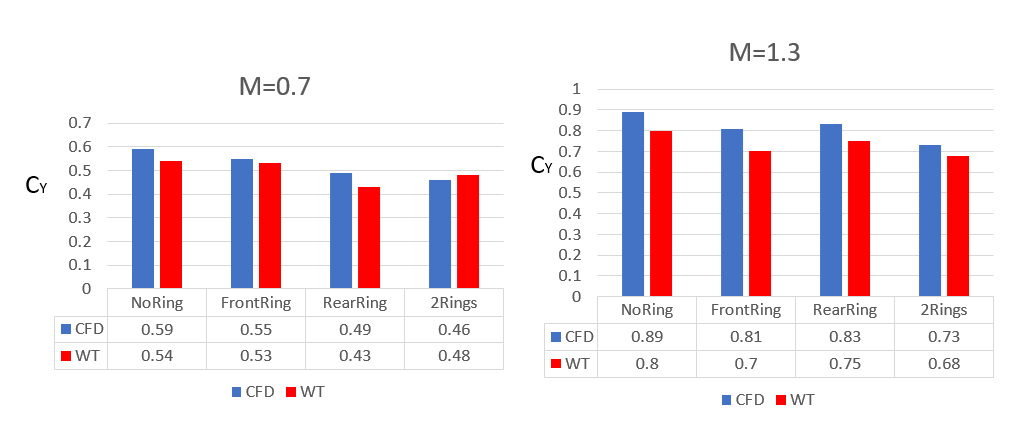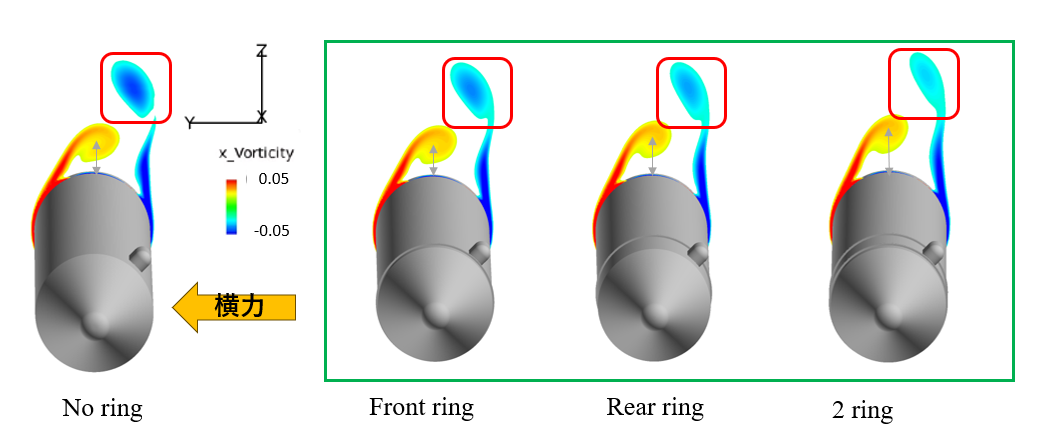Numerical Analysis on Supersonic Vehicle
JAXA Supercomputer System Annual Report February 2024-January 2025
Report Number: R24EACA20
Subject Category: JSS Inter-University Research
- Responsible Representative: Keiichi Kitamura, Associate Prof., Yokohama National University
- Contact Information: oonawa yuuki (oonawa-yuuki-by@ynu.jp)
- Members: Keiichi Kitamura, Tomohiro Mamashita, Yuki Onawa, Sora Yasui
Abstract
Numerical fluid dynamics calculations are being performed to understand the aerodynamic characteristics of rockets with protuberances. In particular, numerical resolution of the flow field around the vehicle due to the ring and the small vortices generated by the protuberances are required. For this purpose, large-scale numerical calculations with a fine computational grid are required: This is the primary reason why we employed JSS3. The results of the computatoinal-fluid-dynamics simulation on the scale of a wind tunnel test are close to the results of the wind tunnel experiment. Furthermore, an analysis by visualization and other means has revealed 3D flow fields that are difficult to obtain in wind tunnel tests.
Reference URL
N/A
Reasons and benefits of using JAXA Supercomputer System
Numerical flow calculations are being performed to understand the aerodynamic characteristics of a rocket with protuberances. In particular, it is necessary to numerically resolve the flow field around the vehicle due to the increase in the Reynolds number, and the small vortices generated by the protuberances. For this purpose, large-scale numerical calculations with a fine computational grid are required: This is the primary reason why we employed JSS3.
Achievements of the Year
Numerical calculations were performed for two uniform flow Mach numbers, 0.7 and 1.3, at an angle of attack of 15 degrees for a slender-bodied vehicle with rings on the front and back of the protuberance, as shown in Figure 1. The relationship between the boundary layer height and the ring height was investigated by reducing the ring height by approximately half (approximately 1.5% of the vehicle diameter) from the height in the previous study (3% of the vehicle diameter). As shown in Figure 2, the results were in close agreement with the wind tunnel test results. Next, Figure 3 shows a visualization of the vorticity behind the vehicle at Mach number 0.7. In the flow on the starboard side, where there is no protuberance, the vortices in the 2-rings-configuration are further away from the body than in the no-ring case. On the other hand, for the flow on the port side, the size of the vorticity color is smaller, indicating that the vortex has been weakened. This indicates that the change in vortex due to the addition of the rings differs between the starboard and port side flows.
Publications
N/A
Usage of JSS
Computational Information
- Process Parallelization Methods: MPI
- Thread Parallelization Methods: N/A
- Number of Processes: 480 - 960
- Elapsed Time per Case: 24 Hour(s)
JSS3 Resources Used
Fraction of Usage in Total Resources*1(%): 0.17
Details
Please refer to System Configuration of JSS3 for the system configuration and major specifications of JSS3.
| System Name | CPU Resources Used(Core x Hours) | Fraction of Usage*2(%) |
|---|---|---|
| TOKI-SORA | 4141747.52 | 0.19 |
| TOKI-ST | 52616.22 | 0.05 |
| TOKI-GP | 0.00 | 0.00 |
| TOKI-XM | 0.00 | 0.00 |
| TOKI-LM | 9265.30 | 0.67 |
| TOKI-TST | 0.00 | 0.00 |
| TOKI-TGP | 0.00 | 0.00 |
| TOKI-TLM | 0.00 | 0.00 |
| File System Name | Storage Assigned(GiB) | Fraction of Usage*2(%) |
|---|---|---|
| /home | 939.17 | 0.63 |
| /data and /data2 | 59688.33 | 0.29 |
| /ssd | 8366.67 | 0.45 |
| Archiver Name | Storage Used(TiB) | Fraction of Usage*2(%) |
|---|---|---|
| J-SPACE | 46.25 | 0.15 |
*1: Fraction of Usage in Total Resources: Weighted average of three resource types (Computing, File System, and Archiver).
*2: Fraction of Usage:Percentage of usage relative to each resource used in one year.
ISV Software Licenses Used
| ISV Software Licenses Used(Hours) | Fraction of Usage*2(%) | |
|---|---|---|
| ISV Software Licenses(Total) | 868.03 | 0.59 |
*2: Fraction of Usage:Percentage of usage relative to each resource used in one year.
JAXA Supercomputer System Annual Report February 2024-January 2025





